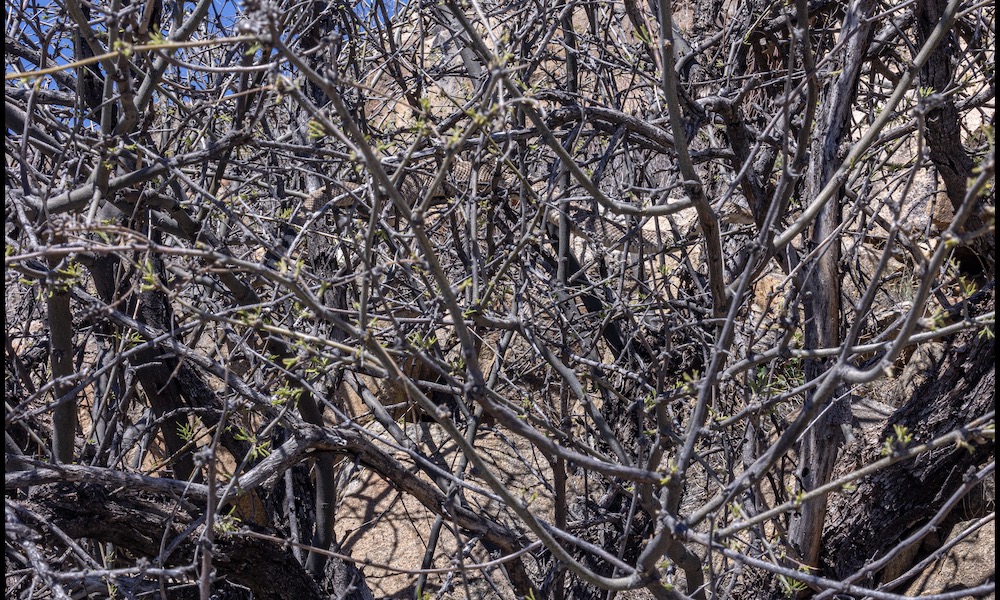A rattlesnake expert in Arizona on Sunday shared an image showing a large western diamondback rattlesnake stretched out in a tree.
It might require some adjustment, but viewers should be able to easily spot the reptile among the branches.
Perhaps a better question, which Rattlesnake Solutions owner Bryan D. Hughes addressed in his tweet, is what inspired the rattlesnake to climb a tree?
Hughes explained: “In this area, multiple males come in to challenge for the prime location at the den. This big one is on patrol, searching for these rivals and making sure everyone is where they should be.”
A large Western Diamondback Rattlesnake climbing in a tree. In this area, multiple males come in to challenge for the prime location at the den. This big one is on patrol, searching for these rivals and making sure everyone is where they should be. pic.twitter.com/DHR9a8MAPu
— Bryan D. Hughes (@rattlesnakeguy) April 9, 2023
To be sure, the vast majority of rattlesnake sightings occur on the ground, where the reptiles blend into their surroundings while resting or waiting to ambush prey.
ALSO: Fishing boat speeds over sea lions in ‘terrible’ scene caught on video
But rattlesnakes occasionally climb trees.
Last year, a hunter in Georgia was horrified to discover a timber rattlesnake tucked into the seat of his deer stand, 20 feet up a tree.
Jason Clark, of Southeastern Reptile Rescue told Georgia Outdoor News that the snake was likely on the scent of a squirrel or other prey.
In 2020, a New Mexico resident shared video showing a nearly 6-foot rattlesnake near the top of a mesquite tree. (Watch video below.)
“The snake was up high, soaking up the early morning sun, but his rattler was going at high speed,” Jerome Perez told McClatchy News. A small sparrow was flapping frantically in front of the snake, trying to keep it from a nest likely hidden in the tree.”
In August 2020, the Bureau of Land Management – Arizona shared an image of a diamondback rattlesnake “basking” on a branch in the San Pedro Riparian National Conservation Area.
The agency wrote: “Did you know? Rattlesnakes are rarely observed in trees, except when basking, hunting prey such as birds and rodents, or to escape from extreme heat or a high water level.”
The image shared Sunday by Hughes was captured last year in Yavapai County, Arizona.
